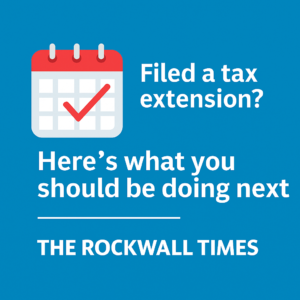Filing taxes can feel overwhelming, especially if you’ve fallen behind. If you haven’t filed your tax return in over five years, you’re not alone. Many people miss filing deadlines due to financial hardships, major life changes such as the death of a loved one or even divorce, or simply not knowing where to start. The problem is that ignoring the issue can lead to serious consequences, including penalties, interest, wage garnishments, and even legal action by the IRS.
The good news? The IRS wants taxpayers to come into compliance, and there are ways to catch up without making the situation worse. Here’s a step-by-step guide on what to do if you haven’t filed your tax return in more than five years.
Step 1: Don’t Panic – But Don’t Delay Either
The IRS understands that life happens, and many taxpayers fall behind for various reasons. While the agency is serious about enforcing tax laws, it also provides options to help people get back on track. The key is to act as soon as possible.
The longer you wait, the more penalties and interest will accumulate. The IRS can also file a return on your behalf, known as a Substitute for Return (SFR). This is bad news because the IRS won’t include deductions or credits that might reduce your tax bill. Instead, they will assess your taxes based on income reports from third parties (like employers and banks), often resulting in a much higher tax liability than if you had filed yourself.
Step 2: Determine How Many Years You Need to File
Contrary to what you might think, you may not have to file all past-due returns. The IRS typically requires individuals to file the last six years of tax returns to be considered compliant. However, if you are due a refund from previous years, you only have three years to claim it before the IRS keeps the money permanently.
In some cases, the IRS may request older returns, especially if they have a record of income that suggests you owe a significant amount. This is where it’s helpful to get a tax professional to help you determine exactly what needs to be filed.
Step 3: Gather Your Tax Documents
To file your back taxes accurately, you’ll need records of your income, deductions, and any payments you may have made. If you don’t have these records, don’t worry—there are ways to retrieve them:
- Request Wage and Income Transcripts: The IRS provides transcripts that show reported income from W-2s, 1099s, and other tax documents. You can request these from the IRS online or by calling their automated transcript service.
- Bank Statements and Receipts: If you were self-employed or had other income sources, bank statements and receipts can help reconstruct your earnings.
- Prior-Year Tax Returns: If you previously filed but don’t remember what deductions or credits you took, reviewing past returns can be useful.
Step 4: File Your Tax Returns
Once you have the necessary documents, it’s time to file your returns. If you owe money, don’t let that stop you—getting your returns filed is the most important step in avoiding further penalties. Your options will be e-File vs. Paper Filing. For recent years, you should opt to efile as the process is more streamlined and quicker. However, for older tax returns you may need to be mailed in. Always use certified mail so you have proof of submission.
Step 5: Address Any Balances Owed
If you owe taxes, don’t ignore the debt. The IRS has collection powers that can lead to wage garnishments, bank levies, and even liens on your property. However, there are ways to manage your tax debt. Here are a few:
Payment Plans: The IRS offers installment agreements that allow you to pay your balance over time.
Offer in Compromise (OIC): If you can’t afford to pay the full amount, you may qualify for an OIC, which allows you to settle for less than what you owe. This requires proving financial hardship.
Penalty Abatement: If you have a reasonable cause for not filing (such as a serious illness or natural disaster), you may be able to get some penalties waived.
Currently Not Collectible (CNC) Status: If paying taxes would create extreme financial hardship, the IRS may temporarily halt collection efforts.
Step 6: Prevent Future Issues
Once you’ve filed your back taxes, it’s crucial to stay compliant moving forward. Here’s how:
Set Up a System for Tracking Income and Expenses: If you’re self-employed, use bookkeeping software or hire a professional to keep your records organized.
Make Estimated Tax Payments: If you don’t have taxes withheld from your paycheck, set aside money for estimated tax payments to avoid falling behind.
File on Time, Even If You Can’t Pay: The penalty for failing to file is worse than the penalty for not paying. Always file on time, even if you need a payment plan.
Work with a Tax Professional Year-Round: Having expert guidance can help you avoid mistakes, maximize deductions, and ensure you never fall behind again.
What If the IRS Has Already Contacted You?
If you’ve received IRS notices, don’t ignore them. The IRS may have already started collection efforts, and the sooner you respond, the better. If you’ve received a Notice of Intent to Levy, a tax professional can help stop enforcement actions and negotiate a resolution.
Brass Tax Moment
Catching up on five or more years of unfiled taxes might seem overwhelming, but it’s entirely possible with the right approach. The IRS is more willing to work with taxpayers who voluntarily come forward rather than those who wait until they’re caught.
By acting now, you can reduce penalties, limit stress, and move forward with a clean slate. Whether you go it alone or work with a tax resolution expert, the most important step is getting started. Your goal should always be to minimize or eliminate penalties and interest. Being proactive helps you mitigate further penalties and interest.
About the Author

Based in Rockwall, Texas, Karena Burgess brings over 18 years of financial experience, including 8 years on active military duty and 10 years with the Department of Defense. As an IRS Enrolled Agent (EA) and Certified Tax Resolution Specialist (CTRS), Karena specializes in solving complex tax issues and helping individuals stay on track with the IRS.
Contact:









































